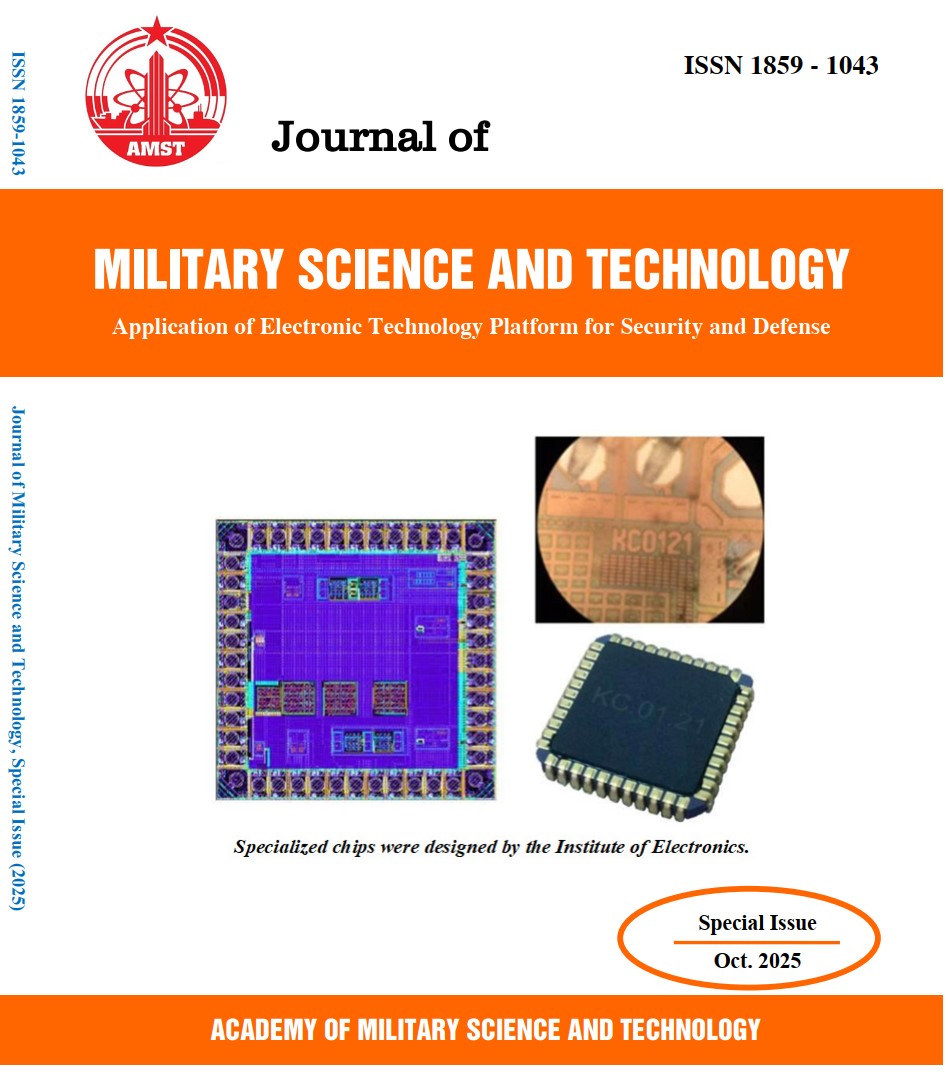Broadband signal source localization using convolutional neural networks combined with coherent signal subspace methods
283 viewsDOI:
https://doi.org/10.54939/1859-1043.j.mst.IITE.2025.115-122Keywords:
Array Signal Processing; DOA Estimation; Deep neural network; Subspace method; Root-MUSIC.Abstract
In array signal processing, the Direction Of Arrival (DOA) of the wideband radio frequency signal source plays a key role in fields such as sonar, radar, communications, and electronic warfare. Root Multiple Signal Classification (Root-MUSIC) is one of the good algorithms in the subspace method. This algorithm is based on some assumptions, including the initial angular, but their performance is strongly degraded when these assumptions do not hold. The article presents a novel approach that uses Deep Neural Network (DNN) in combination with Root-MUSIC algorithm for improvement in DOA estimation. Observation samples are divided into distinguishable subspaces. The input autocorrelation matrix is trained by DNN to analyze real values. An estimator based on Super-resolution subspace improving the accuracy of direction-of-arrival estimation is presented and analyzed in the paper. Our simulation results show that wideband signal sources can be calculated in low SNR and limited snapshot conditions.
References
[1]. P. R. O. Schmidt, “Multiple emitter location and signal parameter estimation,” IEEE transactions on antennas and propagation, Vol. 34, No. 3, pp. 276–280, (1986). DOI: https://doi.org/10.1109/TAP.1986.1143830
[2]. R. Roy and T. Kailath, “ESPRIT—Estimation of signal parameters via rotational invariance techniques,” IEEE transactions on acoustics, speech, and signal processing, Vol. 37, No. 7, pp. 984–995, (1989). DOI: https://doi.org/10.1109/29.32276
[3]. M. Feder and E. Weinstein, “Parameter estimation of superimposed signals using the EM algorithm,” IEEE transactions on acoustics, speech, and signal processing, Vol. 36, No. 4, pp. 477–489, (1988). DOI: https://doi.org/10.1109/29.1552
[4]. Y. Jiang, X. Zhang, and W. Liu, “Deep neural networks for direction-of-arrival estimation with massive MIMO systems,” in proceedings of the IEEE global communications conference (GLOBECOM), pp. 1–6, (2017).
[5]. L. Liu, C. Huang, and Y. Shi, “Convolutional neural network-based DOA estimation using multiple snapshots,” in proceedings of the IEEE international conference on acoustics, speech and signal processing (ICASSP), pp. 3286–3290, (2018).
[6]. D. Kim and J. C. Ye, “Deep learning-based direction-of-arrival estimation with circular microphone arrays,” IEEE signal processing letters, Vol. 26, No. 8, pp. 1177–1181, (2019).
[7]. D. H. Shmuel, J. P. Merkofer, G. Revach, R. J. G. van Sloun, and N. Shlezinger, “SubspaceNet: Deep learning-aided subspace methods for DoA estimation,” arXiv preprint, arXiv:2306.02271, doi:10.48550/arXiv.2306.02271, (2024). DOI: https://doi.org/10.1109/TVT.2024.3496119
[8]. L. M. K., J. H. M., and Y.-S. Yoon, “TOPS: new DOA estimator for wideband signal,” IEEE transactions on signal processing, Vol. 54, No. 6, pp. 1977–1989, (2006). DOI: https://doi.org/10.1109/TSP.2006.872581
[9]. K. Forsythe, “Utilizing waveform features for adaptive beamforming and direction finding with narrowband signals,” Lincoln laboratory journal, Vol. 10, No. 2, pp. 35–50, (1997).







